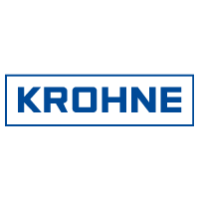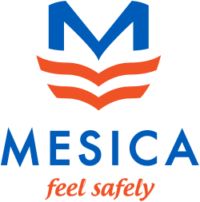Everything You Need To Know About Safety Gloves
Friday 18th January 2019
The importance of health and safety in the industry is increasing. Understandably, providing the right personal protective equipment can be overwhelming. You may need a glove that is resistant to cuts, or with a nitrile coating, or with a polyester liner. The options are vast. So let Optimas help you select the safety glove that you need.
What Standards are there and how are they tested?
The table below shows the icons used for the relevant standards.
Source HSE
EN 420:2003 – General requirements for protective gloves.
Markings
Each glove carries the manufacturer’s logo, the reference, the size and CE mark. If it is classed in category III, the number of the notified body that carried out the tests also appears on the glove.
Dexterity (1-5)
The higher the rating, the greater the dexterity.
Innocuousness (pH)
All gloves are checked for compliance in terms of their pH value (between 3.5 and 9.5).
Performance Levels
The higher the rating, the greater the performance, the lowest rating being zero.
EN 388:2016 – Protection against mechanical risks

Source Globus
EN 374:2016 – Protection against chemicals & micro-organisms

The test catalogue has been extended as per the new standard. The chemicals with code letters from M to T are new:

Marking of protective gloves:

Source uvex
EN 407:2004 – Protection against heat

Source Globus
EN 511:2006 – Standard for protection against cold

Source Globus
EN 12477 – Protection against the risks of welding
This standard describes how the gloves are designed to provide protection for both hand and wrist while welding or simular work, this is a combination from testing EN 388 and EN 407. Welding gloves shall provide resistance to small splashes of molten metal, short exposure to convective heat, to radiant heat and to contact heat. The welding gloves shall give protection from mechanical risks as well.
Type A refer to gloves that shall provide a higher protection against heat.
Type B refer to gloves that provide a lower protection against heat but they are more flexible and pliable.
How to read an EN standard?
What types of gloves are there?
 |
 |
|
|
Chemical Resistant Gloves For employees handling certain potentially dangerous substances, wearing the right chemical resistant gloves can be the difference between staying safe and suffering from a potentially serious injury. Take a look at our full range of chemical resistant hand safety products |
Cut Resistant Gloves Whether it’s slicing, cutting, shearing or sharp-edged handling, Optimas has the glove for you. |
|
 |
 |
|
|
Disposable Gloves Available in latex or nitrile. Nitrile has many benefits over Latex such as being 4 times more puncture-resistant than standard latex gloves, having a stronger barrier of protection through greater chemical resistance, a smoother interior coating making them easier to put on and take off, and can be worn under or over other work gloves to add liquid-proof protection. |
Impact Gloves Impact-resistant gloves, also called anti-impact gloves, are designed with padding along the back of the fingers, hand and wrist to prevent knocks, bumps, crushing and pinch point injuries. |
|
 |
||
|
Thermal Work Gloves When working outside or in cold conditions on site, having a warm pair of winter gloves is fundamental to ensuring you can get on with the job in hand without experiencing discomfort from cold hands and fingers. Providing a soft lining for comfort whilst maintaining dexterity and flexibility, a pair of thermal gloves allows you to get on with your day in spite of cold hazards. |
What about liner types?
|
|
|
|
|
Cotton Flexible, soft and non-irritating, it protects against mechanical aggression (impacts, low vibration, iron filings, splinters, glass fragments), absorbs perspiration and gives you great comfort when wearing dipped protective gloves continuously. |
|
Nylon A lightweight elastic polyamide which is largely lint-free and washable, dries quickly and is resistant to abrasion and deformation. Mixed with cotton and acrylic, it makes the glove more flexible and extends its lifetime. |
And Coating Types?
|
|
|
|
|
Nitrile A non-slip, synthetic polymer, nitrile gloves are flexible and can withstand abrasion and puncturing. Repels oils, grease, hydrocarbons and is resistant to chemicals, particularly acids in gauntlet format. |
Latex Natural rubber that is supple, elastic, robust, waterproof, detergent-safe and highly resistant to mechanical impacts and hazards. |
Polyurethane (PU) Elastomer that is resistant to wear, abrasion, tearing, harsh oils and chemicals. Doesn’t go hard in the cold or soft in the heat. Microporous and provides the hand with ventilated. Very elastic and adapts to all of the hands movement. |
Still have a question? Contact us
Ready to order your gloves? Check out our fantastic offers and order now.




















